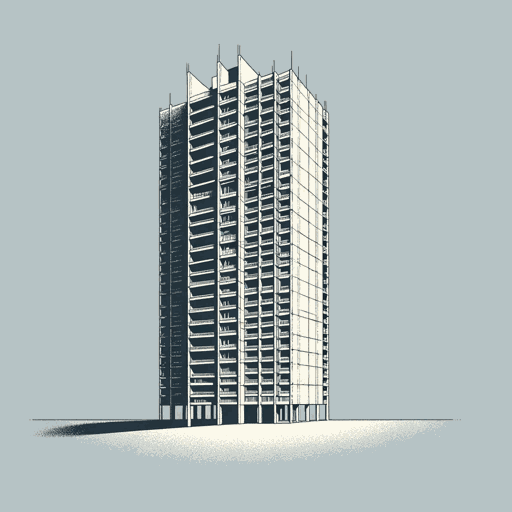52 pages • 1 hour read
J. G. BallardHigh-Rise
Fiction | Novel | Adult | Published in 1975A modern alternative to SparkNotes and CliffsNotes, SuperSummary offers high-quality Study Guides with detailed chapter summaries and analysis of major themes, characters, and more.
Important Quotes
“Later, as he sat on his balcony eating the dog, Dr. Robert Laing reflected on the unusual events that had taken place within this huge apartment building during the previous three months.”
(Chapter 1, Page 7)
The matter-of-fact first line of the novel, a flash-forward three months from the start of the “unusual events,” foreshadows the high-rise’s disintegration. The use of the euphemistic phrase “unusual events” to describe violent barbarism suggests that, because this barbarism has become the new normal, to call it barbarism would be hyperbole.
“It’s almost as if these aren’t the people who really live here.”
(Chapter 1, Page 21)
Helen Wilder says this to Laing after he rescues her from a hostile 17th-floor accountant berating her for letting her children loose. This enigmatic line refers to the transformation underway: The supposedly civil bourgeois residents begin showing their latent aggression. The high-rise elicits this hidden aggression with its hostile, hierarchical design.
“Sadly, they had little chance of success, precisely because their opponents were people who were content with their lives in the high-rise, who felt no particular objection to an impersonal steel and concrete landscape, no qualms about the invasion of their privacy by government agencies and data-processing organizations, and if anything welcomed these invisible intrusions, using them for their own purposes. These people were the first to master a new kind of late twentieth-century life. They thrived on the rapid turnover of acquaintances, the lack of involvement with others, and the total self-sufficiency of lives which, needing nothing, were never disappointed.”
(Chapter 3, Page 42)
Wilder is pessimistic about the prospects for a lower-floor rebellion. Despite the socioeconomic homogeneity of the residents, the building nonetheless becomes stratified according to the classic three economic classes. The middle-class core of the building—comprised by the 11th through the 34th floors—is home to people like the Steeles who, like a new species of human, thrive amid hostile technological environments. These bourgeois residents have a better chance of defending the status quo of the high-rise than the lower-floor residents do of overthrowing it.
Related Titles
By J. G. Ballard




